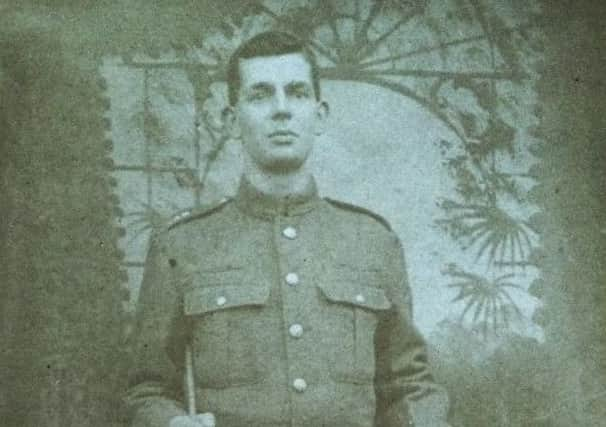New film tells moving story of WW1 soldiers' island on Lough Erne


In the immediate aftermath of the Great War, Prime Minister David Lloyd George made the famous election pledge that there would be “homes fit for heroes” for troops returning from the trenches.
One of the most unique and fascinating resettlement schemes for returning veterans took place on Cleenish island on Upper Lough Erne.
Advertisement
Hide AdAdvertisement
Hide AdBased on research carried out by Bellanaleck Local History Group, a film titled “Making It Home” tells the story of 11 men who were each given a sizeable new home with substantial farmland on Cleenish Island.
However, the Fermanagh island was to become a lonely place for its inhabitants. It had no bridge, no electricity, no running water, and no shops or any other amenities.
Some of the men were returning from the nightmarish horrors of the First World War, with gunshot wounds and other terrible injuries, including the mental scars afflicting so many of the men returning from the grisly battlefields of the Great War.
To a man, the veterans had suffered greatly in the war, having between them fought at almost all of the bloodiest battlefields of the conflict.
Advertisement
Hide AdAdvertisement
Hide AdThe soldiers on Cleenish Island faced terrible difficulties trying to carve out a life on the island, with the only link to the rest of society coming in the form of a small, flat-bottomed wooden boat.
They were largely left to their own devices and were expected to be self-sufficient.
They could farm the land and sell their cattle at market but each man was expected to repay the small fortune awarded to them to pay for their new homes.
Just one of the 11 battle-scarred soldiers was to remain on Cleenish – Johnny Balfour, who lived on the island until he passed away at the age of 102.
Advertisement
Hide AdAdvertisement
Hide AdThe new film tells the story of each of the men’s struggles as they tried to maintain their farm holdings of between 26 and 40 acres, along with a two-storey house.
Margaret Judge, treasurer of Bellanelleck Local History Group, told the News Letter: “There was no bridge onto the island at that time. They had a boat called a cot, a sort of flat-bottomed wooden boat, and if they wanted to get their cattle out to market they had to bring it out on this boat.
“Another factor would have been the fact that a lot of the men were injured during the war. Some of them had suffered gunshot wounds and various other injuries but they also had to contend with what we would nowadays call post-traumatic stress disorder, or shellshock in those days.
“When they were given the houses and land, they were expected to be self-sufficient. The island itself is around 380 acres. The land is very good land for farming – the best in Fermanagh, they say.
Advertisement
Hide AdAdvertisement
Hide Ad“The problem is that they didn’t anticipate the fact that the soldiers had such awful injuries. We found that to be true in this case. If it had not been on an island it may have been a success. It is such an isolated life on an island. Apart from two of the men – one of whom had saved the other’s life during the war and the two went on to become great friends –they didn’t know one another. They were from a mixed community background.
“When we discovered that it had been soldiers living on the island, we set about trying to find relatives of the men who had lived there. Some of the relatives didn’t even know the men had fought in the war and some of them knew very little about their life on the island.
“The further we got into the story, the more fascinating it became, about this soldiers’ island and their lives after the war.”
The men who lived on the island were Alexander Boyd, Thomas McAloon, Clemence Cluff, Henry Carruthers, Francis Brennan, Thomas Bannon, Francis Suttle, James McNally, Humphrey Boyd, Thomas Dickson and Johnny Balfour.
Advertisement
Hide AdAdvertisement
Hide AdBetween them, the 11 war veterans had fought in some of the bloodiest and most notorious battlefields of the entire conflict, including the Somme, Ypres, Messines, Cambrai, Thiepval, and Gallipoli.
The only soldier to remain on Cleenish Island until his dying days was Johnny Balfour, who served in the war with the Royal Irish Rangers.
Margaret Judge, from Bellanelleck Local History Group, told the News Letter that, like many of the soldiers scarred by their experiences in the war, Mr Balfour was reluctant to talk about what he went through. She explained, however, that he had been interviewed in the 1970s by Helen Madden for a BBC radio programme entitled Up Country. During the interview, he opened up and spoke about the horrors he experienced.
He said: “I seen them blew into bits, legs blew off, arms blew off, and I seen them lying knee to knee, the dead. The Devil can throw nothing at me that I haven’t seen already.”
Making It Home, directed by Michael Brown, is available on DVD from Bellanaleck Local History Group. For more details, email [email protected].